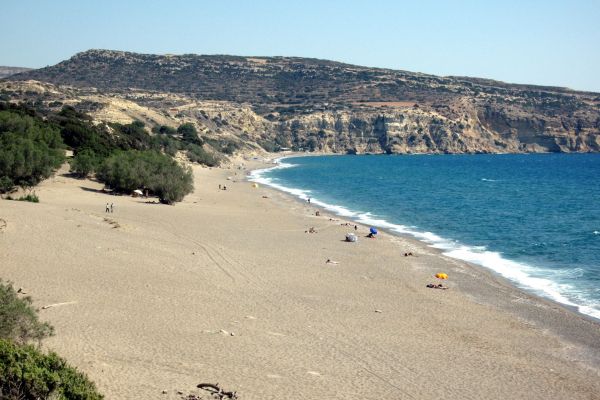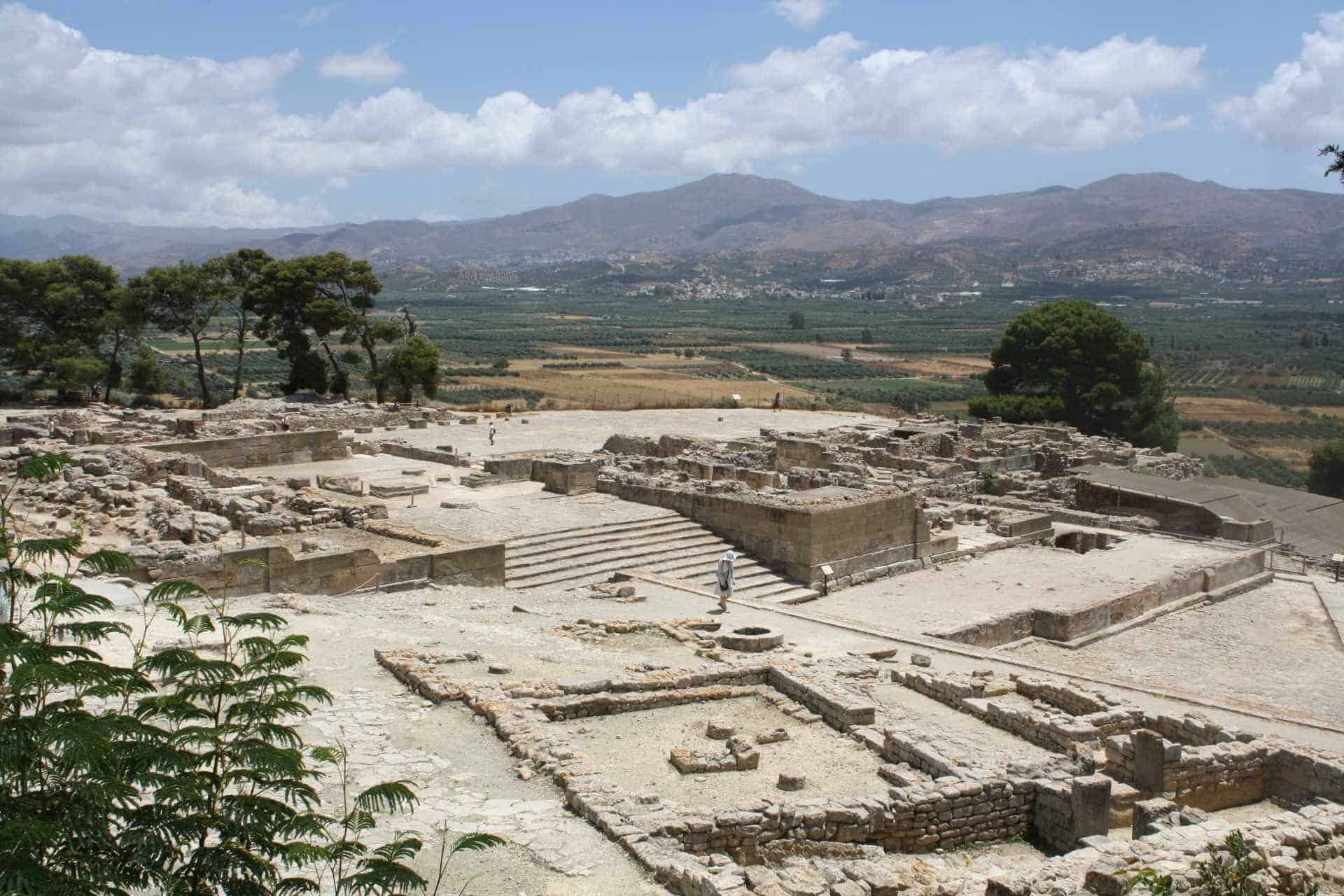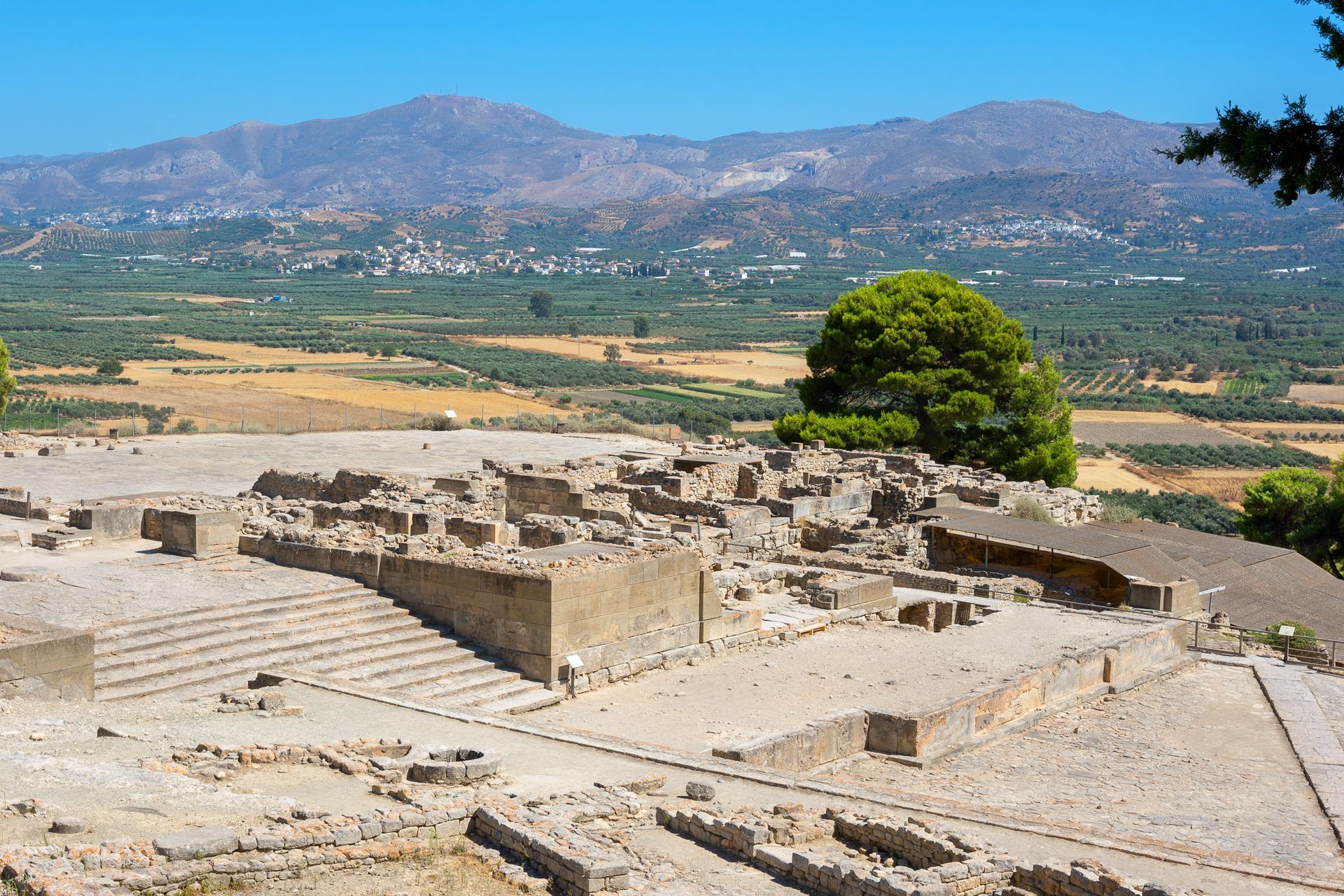Phaistos - Archaeological site
Phaestus (Phestos or Festos) was a Minoan city on Crete, the ruins of which are located 55km south of Heraklion. The city was already inhabited since 6000BC and prospered concurrently with the city of Knossos, till the 1st century BC.
Phaestus is famous for its Minoan palace, which is a visitable archaeological site and receives thousands of visitors every year. The palace of Phaestus was built on a low hill in the plain of Messara, with panoramic views to the surrounding area. It is the second largest after Knossos and occupies an area of 18 acres.
The palace of Phaestus was built in about 2000BC, according to the legend, by Minos. The palace’s king was the brother of Minos, the mythical Rhadamanthys. Rhadamanthys was second son of Zeus and Europe and was known for his righteousness. Indeed, he is considered the writer of the Cretan Code, the first standards of Justice, which was later adopted by the Spartans. Due to his fairness, after his death, he was assigned as a judge in Hades (like his brother Minos).
The palace was destroyed in about 1700BC by an earthquake, but was restored immediately. Then Phaestus declined and the neighboring settlement of Agia Triada flourished, the archaeological site of which you can visit today. Phaestus remained the most important religious center of southern Crete. After the destruction of 1450BC (possibly due to an earthquake), Phaestus recovered and created its own currency. This new bloom lasted till the first century BC, when it was destroyed by the neighboring Gortys, which then became the new capital of Crete.
The buildings a visitor sees today are in Phaestus date back in 1700-4150BC and, unlike Knossos, have not been restored. The excavations started in 1900 by the Italian Archaeological School under the guidance of Federico Halbherr and Luigi Pernier, while in 1950-71 they were carried out by Doro Levi.

Komos beach
It is a lengthy stretch - over 2km long and up to 40m wide - of deep golden sand backed by natural dunes and cliffs topped with tamarisk trees, which is also a paradise for naturists and most likely will become an official naturist beach. At the s...

Kali Limenes
The beach of Kali Limenes is located 75km southwest of Heraklion, in the region of Pigaidakia village. It is one of the very few coastal areas of Asterousia Mountains that are accessible via a paved road. To get here, you have to drive from villa...





